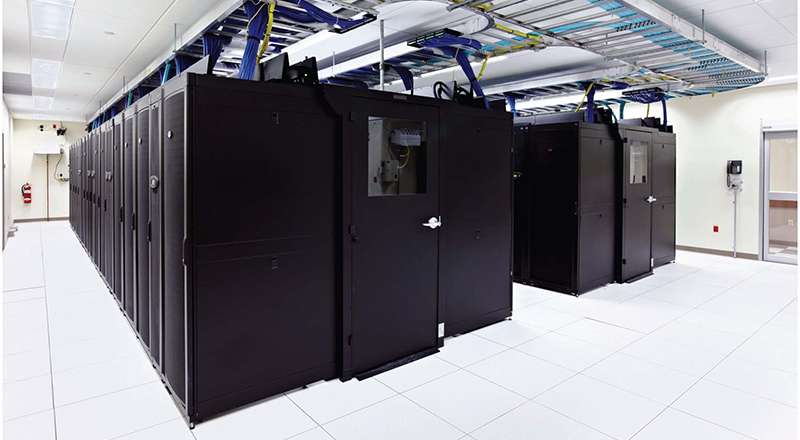A Q&A with Michael Fluegeman, PE who was recently quoted in Asco’s Load Bank Testing white paper.
What are the two or three most important benefits of load bank testing? I am often involved in load bank and other testing for UPS systems as well as for optional standby (sometimes emergency) generators and associated switch-gear. Load bank testing allows for performance testing of critical equipment from very light loads up to nameplate and/or design loads, which is normally not possible using live load. With proper design configurations, live critical load can be safely isolated, allowing load bank testing with minimal risk and disruption. IR thermal scanning is typically more effective when load banks are used, compared to scanning with only live load which is often too low to make potential hot spots obvious. Load bank testing allows fail-over and bypass operation under load in modes that are not normally used with live load, which would put live load in various high risk operational modes.
If facility executives do a combination of load bank and building load testing, when and why do they do each? Load bank testing is ideal for initial commissioning and for periodic component and subsystem maintenance testing. For facilities where load banks can be connected downstream of switchgear (at or near the critical load point) with minimal disruption, load banks are often preferred over live load. However many designs require shutdown of live load or other complex operations to connect load banks, therefore live load is sometimes the best available option. In some cases, even with extensive load bank testing, final testing with live load is required to fully validate performance. Live load sometimes presents a more challenging load profile than load banks (dynamics of power factor, harmonics, etc.) for generators and UPSs.
What are best practices for load bank testing? Test up to the highest loads feasible, up to component ratings and system design levels. Good electrical designs will include safe, low-risk load bank connection points. When IR thermal scanning under load bank (or live) load, it is a good idea to ease the load up, begin scanning, and re-scan waiting at least 15 minutes after reaching design load. Bad connections and other problems don’t always show up right away. It is a good idea to attempt to scan the entire power flow under test, as far upstream as is accessible. It is a good idea to connect the load bank as far downstream as possible, to test as much of the critical power path as is feasible. When load testing UPS batteries, it is important to keep load on the UPS after the test, during recharge, and to continue IR scanning for several minutes. New UPS and generator systems are often loaded at 100% of rated resistive load capacity for four hours or more. When load testing a standby generator system, it is good to load downstream of ATSs and operate ATSs in all modes including bypass isolation, if applicable. It is a good design practice to make load bank testing easy, convenient and low-risk. This can be achieved by adding load bank connection points as simple as normally locked-off load bank circuit breakers or as elaborate as automated or key-interlocked load bank switchboards. Docking stations for load banks for standby generators are available as cataloged items in many configurations. Simply ordering a spare breaker in a generator which can also be used for load bank testing is a good practice. A permanent load bank connection point eliminates the need to remove and re-attach permanent critical load wiring, saving time in the maintenance window and reducing the risk of introducing new problems with permanent cable removal and replacement, such as stripping threads or not getting connections right.
How should records be kept of emergency generator testing? Good practice is to document what was tested, how it was tested, when it was tested and the results of the test in summary form and with detail. Test reports should make it clear where and how much load was connected and for how long at each load level. Recording meters can be used; however careful manual documentation is often good enough. When testing a backup generator with live load, load details along with time-of-day and other conditions (weather, building under normal use or unoccupied, etc.). Live load generator testing provides an indication of what the actual load on the generator might be during an actual power failure. During generator load testing of 30 minutes or more, engine temperature should be documented throughout.
How can this data be analyzed and trended? What do you do with this analysis? Trending will allow analysis of load changes, performance changes (generator cooling, fuel consumption, etc.). When upgrades or other modifications to building electrical systems are required one of the first tasks is to understand existing load conditions. Recent generator live load testing can inform this task.
Is a different method of data gathering needed if the facilities manager is renting a load bank or contracting for testing services? Regardless of how the load bank is provided or connected, competent operators, observers of equipment under test and data gathering is required. It is difficult to draw conclusions from testing that is not performed properly or properly documented in sufficient detail. A one-page letter that simply states that equipment was tested and performed as expected, with no detail would not inspire confidence among those who understand the nuances of performance testing and those responsible for critical facility performance.
How does load bank testing fit within regular facility preventive maintenance practice? Load bank testing should be part of annual and triennial PMs. For standby generators that are often tested at no load or light building load, load bank testing as often as annually for a couple hours may be required to prevent exhaust wet-stacking of unburnt diesel fuel. Standby generators should be operated under load for several hours annually to ensure proper performance in a long run, in particular, as temperatures rise.
How does load bank testing fit in a retro-commissioning or continuous commissioning process? (While there is no energy efficiency component, load bank testing is part of ensuring a holistic high-performance building.) Load bank testing should be performed when critical equipment is repaired or modified as well as during PMs. A good practice is to load test UPS batteries annually. At least triennial generator full load testing is recommended. Note that some UPS systems are designed with an internal back-feed mechanism that allows full load testing of all UPS components as well as full load, full duration battery testing without the need for load banks.
Michael Fluegeman, PE is a Principal/Manager of Data Center Support Systems at PlanNet. Along with providing high-level consulting and engineering at PlanNet, Michael frequently speaks and teaches on data center power issues.






